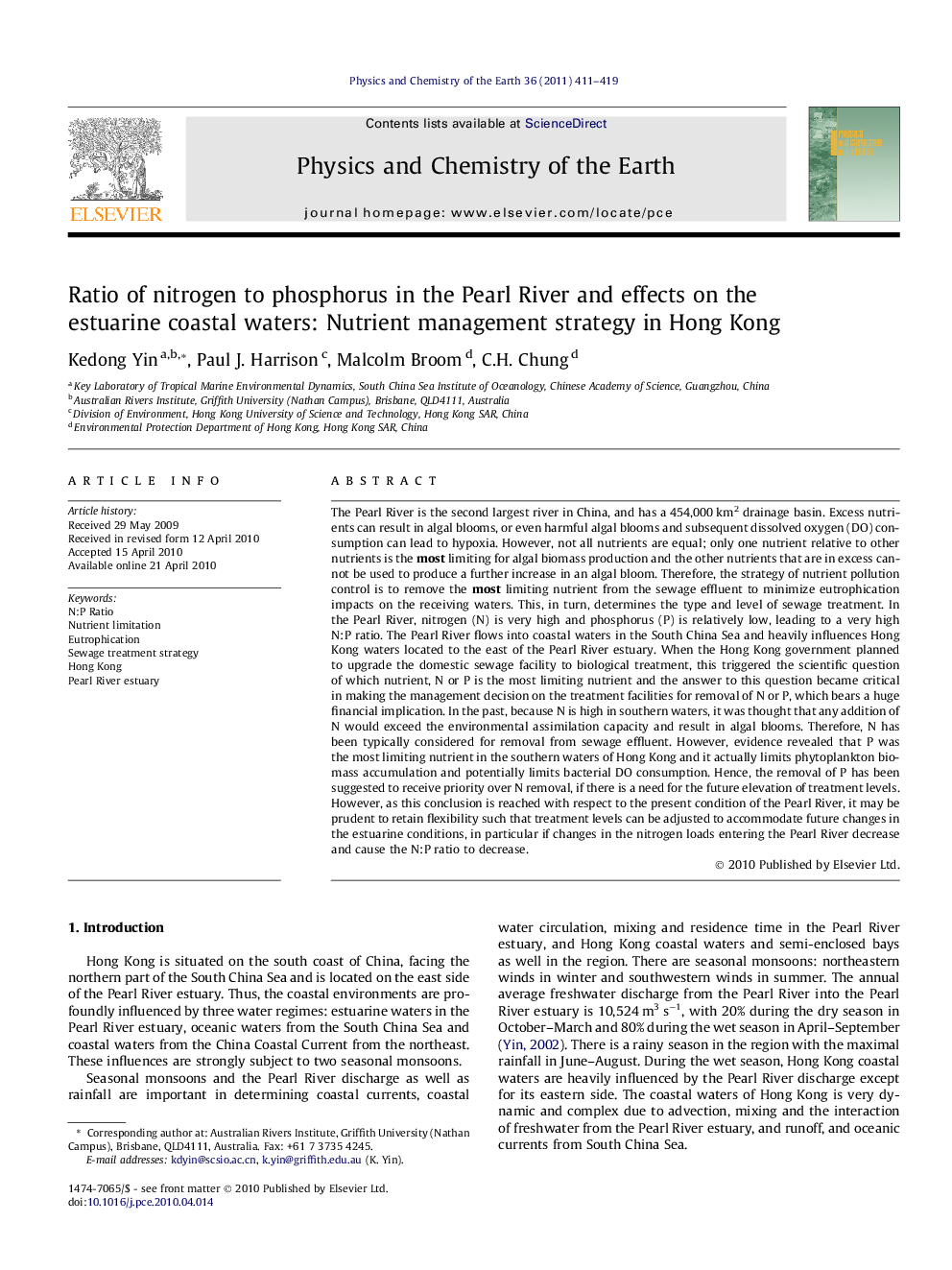| Article ID | Journal | Published Year | Pages | File Type |
|---|---|---|---|---|
| 4721355 | Physics and Chemistry of the Earth, Parts A/B/C | 2011 | 9 Pages |
The Pearl River is the second largest river in China, and has a 454,000 km2 drainage basin. Excess nutrients can result in algal blooms, or even harmful algal blooms and subsequent dissolved oxygen (DO) consumption can lead to hypoxia. However, not all nutrients are equal; only one nutrient relative to other nutrients is the most limiting for algal biomass production and the other nutrients that are in excess cannot be used to produce a further increase in an algal bloom. Therefore, the strategy of nutrient pollution control is to remove the most limiting nutrient from the sewage effluent to minimize eutrophication impacts on the receiving waters. This, in turn, determines the type and level of sewage treatment. In the Pearl River, nitrogen (N) is very high and phosphorus (P) is relatively low, leading to a very high N:P ratio. The Pearl River flows into coastal waters in the South China Sea and heavily influences Hong Kong waters located to the east of the Pearl River estuary. When the Hong Kong government planned to upgrade the domestic sewage facility to biological treatment, this triggered the scientific question of which nutrient, N or P is the most limiting nutrient and the answer to this question became critical in making the management decision on the treatment facilities for removal of N or P, which bears a huge financial implication. In the past, because N is high in southern waters, it was thought that any addition of N would exceed the environmental assimilation capacity and result in algal blooms. Therefore, N has been typically considered for removal from sewage effluent. However, evidence revealed that P was the most limiting nutrient in the southern waters of Hong Kong and it actually limits phytoplankton biomass accumulation and potentially limits bacterial DO consumption. Hence, the removal of P has been suggested to receive priority over N removal, if there is a need for the future elevation of treatment levels. However, as this conclusion is reached with respect to the present condition of the Pearl River, it may be prudent to retain flexibility such that treatment levels can be adjusted to accommodate future changes in the estuarine conditions, in particular if changes in the nitrogen loads entering the Pearl River decrease and cause the N:P ratio to decrease.
